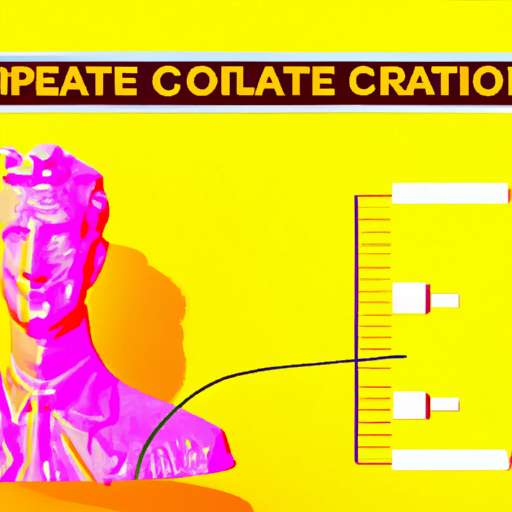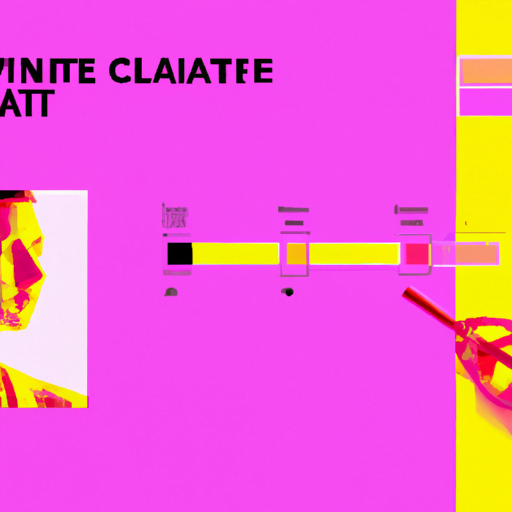
-
Table of Contents
- Creating Interactive Infographics with AI-Powered Tools
- The Power of AI in Infographic Creation
- Examples of AI-Powered Infographic Tools
- 1. Canva
- 2. Visme
- 3. Infogram
- Case Studies: AI-Powered Infographic Success Stories
- 1. NASA’s Mars Exploration Infographic
- 2. World Health Organization’s COVID-19 Infographic
- Benefits and Limitations of AI-Powered Infographic Tools
- Summary
Creating Interactive Infographics with AI-Powered Tools

Infographics have become a popular way to present complex information in a visually appealing and easily understandable format. They combine text, images, and data to convey a message or tell a story. With the advancement of artificial intelligence (AI), creating interactive infographics has become even more accessible and efficient. In this article, we will explore how AI-powered tools can revolutionize the process of creating interactive infographics.
The Power of AI in Infographic Creation
Artificial intelligence has made significant strides in various industries, and graphic design is no exception. AI-powered tools can automate and streamline the process of creating infographics, saving time and effort for designers. These tools utilize machine learning algorithms to analyze data, generate visual elements, and suggest design layouts.
One of the key advantages of using AI in infographic creation is the ability to process large amounts of data quickly. Traditional infographic design often requires manual data entry and manipulation, which can be time-consuming and prone to errors. AI-powered tools can automatically extract data from various sources, such as spreadsheets or databases, and transform it into visually appealing charts, graphs, and other visual elements.
Examples of AI-Powered Infographic Tools
Several AI-powered tools have emerged in recent years, offering designers powerful features to create interactive infographics. Let’s explore some notable examples:
1. Canva
Canva is a popular graphic design platform that incorporates AI to simplify the creation of infographics. It provides a wide range of templates, fonts, and graphics that users can customize to create visually stunning infographics. Canva’s AI algorithms also suggest design elements based on the content provided, making it easier for users to create engaging and interactive infographics.
2. Visme
Visme is another AI-powered tool that enables users to create interactive infographics with ease. It offers a drag-and-drop interface, allowing users to add various elements such as charts, maps, and videos to their infographics. Visme’s AI algorithms analyze the data provided and suggest appropriate visualizations, ensuring that the infographic effectively communicates the intended message.
3. Infogram
Infogram is a data visualization tool that utilizes AI to create interactive infographics. It offers a wide range of chart types and customization options, allowing users to present data in a visually appealing manner. Infogram’s AI algorithms can also analyze the data and suggest the most suitable chart types based on the information provided, saving designers time and effort.
Case Studies: AI-Powered Infographic Success Stories
Several organizations have leveraged AI-powered infographic tools to create impactful visual content. Let’s take a look at some case studies:
1. NASA’s Mars Exploration Infographic
NASA used AI-powered infographic tools to create an interactive infographic showcasing the journey of the Mars Rover. The tool automatically extracted data from the mission logs and transformed it into visually appealing charts and animations. The interactive infographic allowed users to explore the rover’s path, view images, and learn about the scientific discoveries made during the mission.
2. World Health Organization’s COVID-19 Infographic
The World Health Organization (WHO) utilized AI-powered infographic tools to create an interactive infographic on COVID-19. The tool analyzed global data on the pandemic and generated real-time visualizations, including infection rates, vaccination progress, and preventive measures. The infographic helped raise awareness and educate the public about the ongoing pandemic.
Benefits and Limitations of AI-Powered Infographic Tools
Using AI-powered tools for infographic creation offers several benefits:
- Time-saving: AI automates many manual tasks, reducing the time required to create infographics.
- Data analysis: AI algorithms can analyze large datasets and suggest appropriate visualizations.
- Design suggestions: AI-powered tools offer design suggestions based on the content provided, enhancing the overall visual appeal.
- Efficiency: AI streamlines the infographic creation process, allowing designers to focus on the content and storytelling.
However, it is important to acknowledge the limitations of AI-powered infographic tools:
- Dependency on data quality: The accuracy and quality of the generated infographics heavily rely on the input data.
- Creative limitations: AI algorithms may not always capture the designer’s creative vision, limiting customization options.
- Learning curve: Users need to familiarize themselves with the AI-powered tools, which may require some initial learning.
Summary
AI-powered tools have revolutionized the process of creating interactive infographics. They offer designers the ability to process large amounts of data quickly, automate manual tasks, and suggest design elements. Examples like Canva, Visme, and Infogram showcase the power of AI in infographic creation. Case studies from NASA and the World Health Organization demonstrate the real-world impact of AI-powered infographics.
While AI-powered tools offer numerous benefits, it is important to consider their limitations, such as dependency on data quality and creative restrictions. Overall, AI-powered tools have the potential to enhance the efficiency and effectiveness of creating interactive infographics, empowering designers to communicate complex information in a visually engaging manner.
